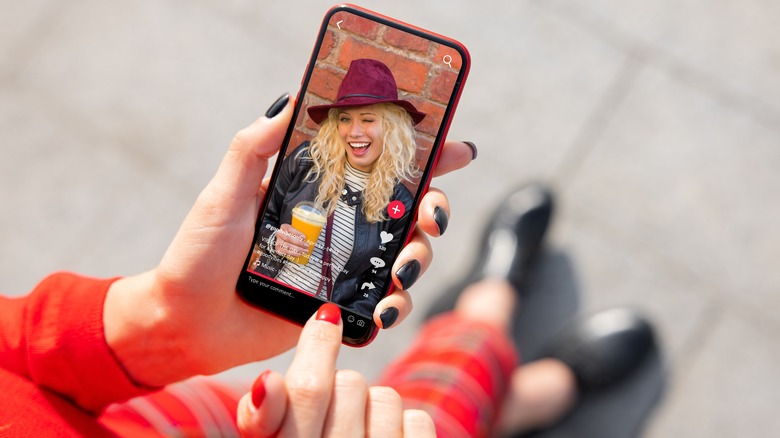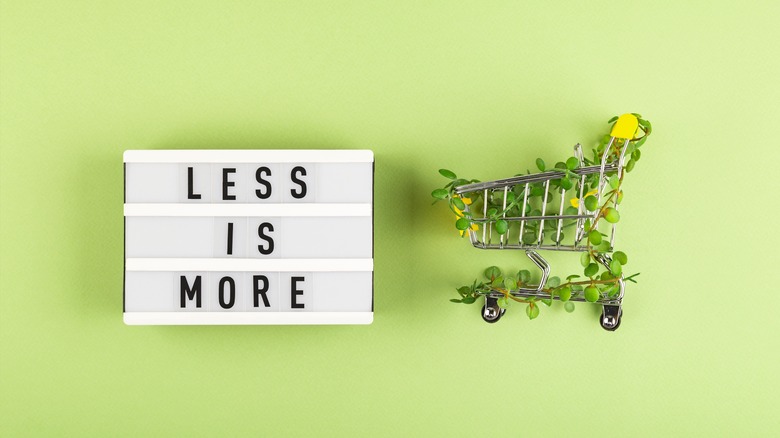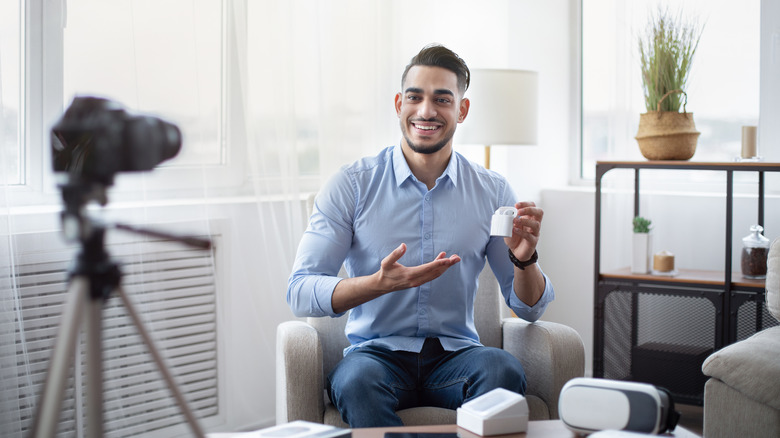Why Deinfluencing Is The Most Healthy TikTok Home Trend Yet
When scrolling through your "For You" page on TikTok, you've undoubtedly come across influencers encouraging you to buy things. These videos are often called something like, "You need these products from Amazon" or "TikTok made me buy it." These are popular for just about every type of product, including home gadgets, furniture, and accessories. Perhaps these videos have caused you to purchase things for your home that you didn't need and may have regretted later.
However, while these TikToks still exist, there's also another type of video that many content creators are making. It's called "deinfluencing," and it basically encourages viewers to save their money by not buying certain items. They often involve the content creator declaring that a certain product or brand is overhyped and not worth the money, and they sometimes suggest a better or cheaper alternative. This trend has gained quite a bit of popularity on TikTok; videos with the hashtag #deinfluencing have gained over 200 million views. This may be the most healthy trend the app has seen yet, for the following reason.
This trend fights against overconsumption
The main reason why this trend is healthier than others is that it influences the consumer to buy fewer items, not more. In a world that constantly bombards you with ads and paid promotions, these videos take the opposite approach and point out the flaws of products or why they're not necessary to purchase. Media is often telling you to spend more money and consume more products, which can lead to regret, excessive clutter, and stress. On the other hand, consuming less could help you save money, impact your mental health in a positive way, and contribute to less waste.
One TikToker, @overcoming_overspending, gets to the root of why this trend is so positive. She says, "I just want to be a voice here on this app and on the internet telling you that wherever you are is exactly where you're supposed to be financially. There's nothing fun, there's nothing sexy, there's nothing alluring about digging yourself in a hole. About being in debt and constantly being stretched. About overconsuming and having your life and your environment cluttered, in a mess, and piling up with stuff you don't even use."
The controversy surrounding this trend
However, not everyone believes that this trend is positive. The biggest point of contention surrounds influencers who deinfluence certain products but recommend others in the same video. TikToker @impactforgood_ says, "When this trend first started, I was so excited to see people becoming aware of their spending habits, being like... 'I didn't realize how many things I bought from TikTok that I don't use.' ... And somehow, this trend has already turned into 'Let's find more dupes, these are the products that are worth your money, I've tried like everything, go to my Amazon storefront.' This is not what it's about. So to whoever needs this reminder... more stuff does not equal more happiness."
However, not every TikToker is recommending products; some are truly using the deinfluencing trend for good. For example, @hellohellohannah posted a TikTok that encouraged using what you already own instead of buying unnecessary kitchen gadgets on Amazon. At the same time, even if an influencer isn't recommending anything, they're still controlling how you spend your money by telling you not to buy certain items, which some are against. Many want consumers to make every decision for themselves and not rely on content creators to tell them what's worth their money and what's not — but for now, it seems like influencer (or deinfluencer) culture is here to stay.


